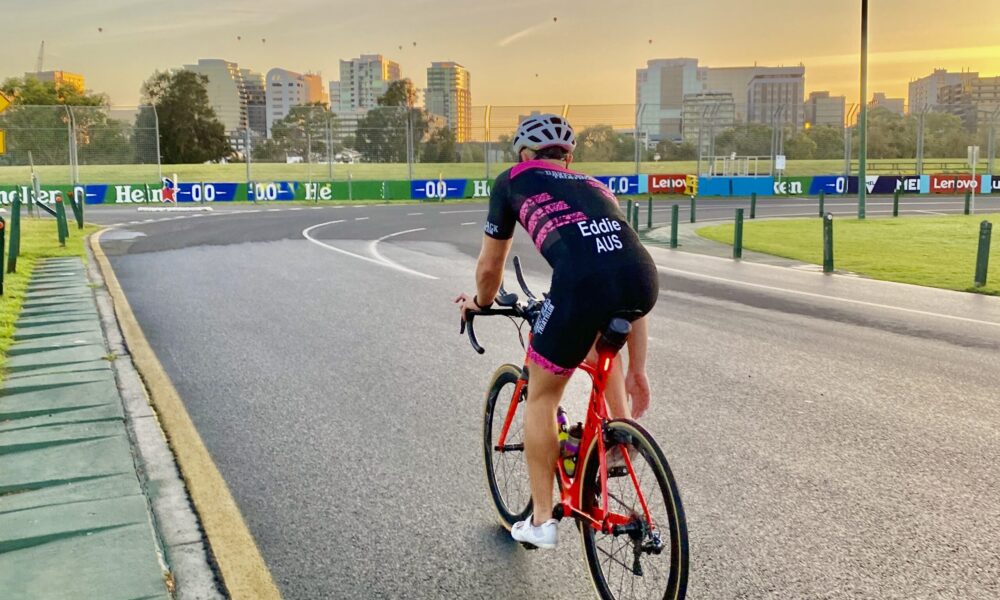Triathlon is a unique and demanding sport that combines swimming, cycling, and running into a single race. To excel in this multisport discipline, athletes must not only be proficient in each individual component but also be skilled at transitioning between them. One often overlooked aspect of triathlon training is the development of transition skills, including the specific skill set required for running off the bike. In this article, Triathlon Australia Coach of the Year Steve Davis will explore the importance of practicing transition skills and provide insights into mastering the art of running off the bike.
The Significance of Transition Skills
Transition skills are the unsung heroes of triathlon success. They play a pivotal role in saving valuable time during a race and can make the difference between reaching the podium or falling short of your goals. The huge bonus is that they don’t require any additional fitness, instead, you just need to practice the skill. Here’s why honing transition skills is so crucial:
- Time Efficiency: Transition times are counted as part of your total race time. Efficient transitions can save you precious seconds, which can add up to minutes over the course of a race. Minimising the time spent in transition zones can give you a huge competitive edge.
- Energy Conservation: Smooth transitions help you conserve energy. Moving from the swim to the bike and then the run requires different muscle groups and biomechanics. The quicker you can transition, the fresher you’ll be for the next leg of the race.
- Mental Preparation: Practicing transitions allows you to mentally prepare for the shift in disciplines. A well-executed transition can boost your confidence, enabling you to start each leg of the race with a clear mindset.
Specific Transition Skills
Transition skills encompass various aspects of moving from one discipline to another. Here are some key skills to master:
- Swim-to-Bike Transition (T1): a. Practice setting up a well-organised transition area. b. Practice running on sand and hard ground in bare feet. c. Practice getting out of your wetsuit quickly. d. Practice getting your helmet and sunnies on quickly. e. Practice getting on your bike and feet into your shoes. f. Ensure your bike is ready to go with nutrition and hydration accessible.
- Bike-to-Run Transition (T2): a. Practice getting your feet out of your shoes and dismounting safely and efficiently. b. Practice running with your bike c. Rack your bike efficiently. d. Remove your helmet and put on running shoes swiftly. e. Run fast out of transition.
- Mental Focus: a. Visualise each transition beforehand to reduce stress. b. Develop a pre-transition routine to stay composed. c. Develop a routine way of setting up your bike and gear so you know exactly where everything is.
Running Off the Bike
Running off the bike is a unique skill that requires practice to maximise performance. Here’s why it’s vital:
- Biomechanical Adaptation: Shifting from the cycling position to the running posture can be challenging. Practice helps your body adapt, improving running form and efficiency.
- Pacing and Strategy: Running off the bike necessitates a different pacing strategy. You need to find your stride and control your effort to avoid overexertion.
- Muscle Memory: Regularly practicing the bike-to-run transition helps establish muscle memory, making the transition more fluid and natural.
Tips for Mastering the Art of Running Off the Bike:
- Brick Workouts: Incorporate “brick” workouts into your training regimen, where you transition from the bike to the run. This practice will help your body adapt to the transition.
- Gradual Intensity: Begin your run conservatively after the bike leg, gradually increasing your pace as your body adjusts.
- Mental Preparation: Prepare mentally for the transition by visualising your running form and pace. Focus on maintaining a relaxed upper body and quick leg turnover.
- Transition Practice: Regularly rehearse your bike-to-run transition in training to improve efficiency.
In the world of triathlon, every second counts, and mastering transition skills, especially running off the bike, is crucial for success. Efficient transitions save time, energy, and provide a mental advantage. To excel in this discipline, it’s essential to include transition-specific training in your triathlon program. By practicing these skills and honing the art of running off the bike, you’ll be better equipped to conquer the challenging sport of triathlon and achieve your goals. You can join the Davey Black Melbourne Triathlon Club at Albert Park every Wednesday at 6:15am to practice your transition skills and make you a faster triathlete this season.

